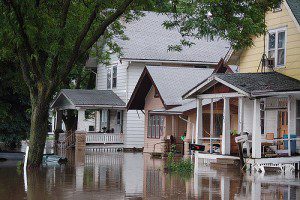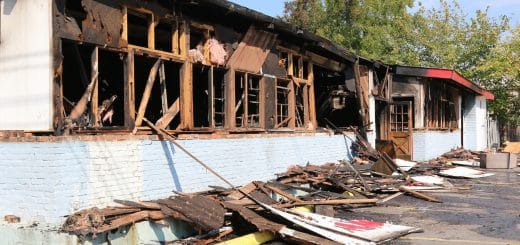20 Important Flood Facts: What You Need to Know to Prevent Flood Damage
Every homeowner is aware that floodingFlooding is the overflow or accumulation of water in areas t... More causes significant damage but many do not understand just what their risk is of experiencing floodingFlooding is the overflow or accumulation of water in areas t... More. Floods can happen anywhere, not just in coastal areas or low lands, and it only takes a few inches of water to cause serious damage. Indoor floodingFlooding is the overflow or accumulation of water in areas t... More is also a major health hazard as the water may contain harmful microorganisms and create the right conditions for moldMold is a type of fungus that grows in damp or humid conditi... More or mildewMildew is a type of fungus that grows on damp surfaces, typi... More. By understanding these flood facts, you can effectively prepare for a flood and take the right actions if one occurs to limit the damage.
20 Flood Facts
- A flood or flash flood can happen in all 50 states in the U.S.
- There are many possible natural causes of floodingFlooding is the overflow or accumulation of water in areas t... More such as heavy rain, melting snow, flash floods, hurricanes, tropical storms, land development, and broken dams.
- Everywhere is a flood zone because where there is water, there can be floodingFlooding is the overflow or accumulation of water in areas t... More.
- The most common natural disaster in the U.S. is floodingFlooding is the overflow or accumulation of water in areas t... More.
- For the past 30 years, floodingFlooding is the overflow or accumulation of water in areas t... More has resulted in almost $8 billion in damage each year.
- Floods cause an average of 82 deaths per year, making it the deadliest weather related disaster in the U.S.
- Land development and construction including new buildings and roads makes an area more vulnerable to floodingFlooding is the overflow or accumulation of water in areas t... More because it takes away land that would naturally absorb the water.
- Deserts can experience floodingFlooding is the overflow or accumulation of water in areas t... More because the hard soil cannot absorb rain water, leading to flash floods.
- Standing flood water could be electrically charged and very dangerous if there are downed power lines.
- Flood water may consist of sewageSewage is wastewater containing biological and chemical cont... More, harmful microorganisms, sharp objects, and other debris which makes it a danger to your health. You should never walk or swim in flood water.
- It only takes six inches of moving flood water to knock you down.
- It only takes two feet of moving water to carry your car away.
- Flash floods can have 10 to 15-foot-high walls of water.
- The government has a Flood PreparednessPreparedness is the state of being ready to respond to emerg... More Disaster Supply Kit PDF available to help you prepare for a flood.
- Most homeowner’s insuranceHomeowner’s insurance is a policy that provides financial ... More policies do not cover flood damage, you must purchase a separate insurance policy to cover flood damage.
- Flood insurance policies can take 30 days before they take effect.
- The National Flood Insurance Program (NFIP) warns that just 1 inch of water can result in over $10,000 worth of damage.
- You can check the floodingFlooding is the overflow or accumulation of water in areas t... More risk in your area with flood hazard maps.
- If your home is in a high-risk area, there is a 1 in 4 chance you will experience floodingFlooding is the overflow or accumulation of water in areas t... More over the period of a 30-year mortgage.
- Areas that are not high-risk flood zones are responsible for over 20 percent of National Flood Insurance Program claims and one-third of federal disaster assistance.

FloodingFlooding is the overflow or accumulation of water in areas t... More is the most common natural disaster.
The facts and resourcesResources include tools, personnel, equipment, and materials... More listed above should provide you with enough information to adequately prepare for floodingFlooding is the overflow or accumulation of water in areas t... More and react effectively to flood damage. Remember, indoor floodingFlooding is the overflow or accumulation of water in areas t... More causes widespread damage very quickly so do not hesitate to contact a professional for water damage restoration. These professionals will stop the spread of the water and handle the entire flood damage cleanup.












